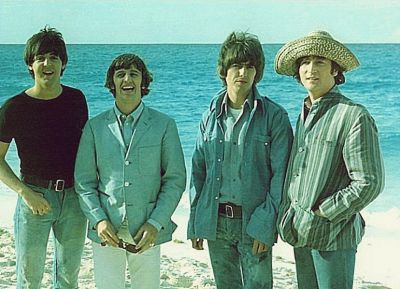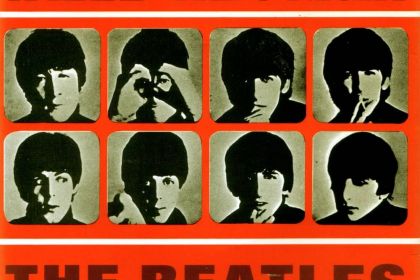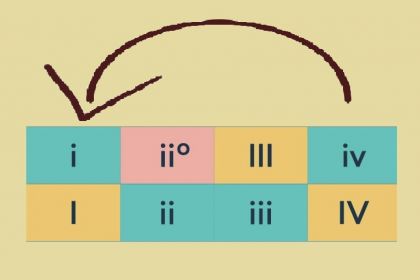Music Theory
Beatles songs with Dorian mode

The Beatles' single cover
The Beatles' phenomenal success is often attributed to the striking euphony of their polyphonic vocals as well as the uncomplicated and easily-hummed melodies. Despite this simplicity, the harmonic structure of their songs reveals a rich variety of composing techniques and advanced musical forms that often follow the canons of classical music.
This fusion of catchy melodies and compositionally sound harmonic progressions contributes to the easy memorization of The Beatles' songs and undoubtedly plays a considerable role in their long-term popularity.
Among the existing variety of The Beatles' songwriting skills, the real highlight is their frequent use of musical modes that form the basis of tonal theory. About a half of their output—167 songs written for the total of 13 studio albums—features chord progressions covering six diatonic modes namely Ionian, Aeolian, Dorian, Phrygian, Lydian, and Mixolydian.
Not surprisingly, the Ionian and Aeolian appear most frequently, exhibiting a common trend in Western music that relies on the versatility of the harmonic structure of these modes. As for the rest of the diatonic modes, often referred to as modal, The Beatles favored Mixolydian (13 tracks) and Dorian (4 tracks), while Phrygian and Lydian have been applied only once each. More on that in these articles:
- Things We Said Today: the only Beatles song featuring Phrygian mode
- Beatles songs featuring Lydian mode.
Although the Dorian mode is classified as a minor one, its main subdominant triad—rooted in the fourth scale degree—is a major chord that brings strong major moods to Dorian progressions, especially when encountered in the final cadences. The structure of the Dorian mode and the peculiarities of its use in songwriting are discussed in detail in this article.
The band's album single And I Love Her is a perfect example of progressions covering all Dorian mode triads with the exception of the diminished chord of the sixth scale degree. In the harmonic analysis of the songs chord chains, the scale degrees (denoted with Roman numerals) show the following progressions in F♯ Dorian:
- F♯m–E–F♯m or i–VII–i for intro;
- F♯m–C♯m–F♯m–C♯m–F♯m–C♯m–A–B–E or i–v–i–v–i–v–III–IV–VII for verses;
- C♯m–B–C♯m–G♯m–C♯m–G♯m–B–B7 or v–IV–v–ii–v–ii–IV–IV7 for the bridge.
In the intro, the F♯m–E alternation of tonic and subtonic triads can be equally interpreted as either Dorian or Aeolian progression since the structure of these chords is identical in both modes. The verses take a more classical shape through the use of true minor harmony and are accompanied by the v–i repetitive authentic cadence resulting in an explicitly major ending with the III–IV–VII progression where all three major chords of the Dorian mode can be heard.
The cleverly conceived bridge chord chain, paired with the lyrics, "A love like ours сould never die as long as I have you near me," juxtaposes the dominant (C♯m chord) and subdominant (G♯m and B chords) harmonic functions thereby generating an expectation of the F♯m tonic chord at the beginning of the next stanza. The song harmony then gets a curious development through the sudden modulation in G Dorian that precedes the solo and the last verse.
Listen to And I Love Her (Remastered 2009) by The Beatles:
A simpler musical form is observed in Rocky Raccoon, all sections of which are accompanied by the single looped chord chain composed in A Dorian: Am7–D7sus4–D7–G7–C or i7–IV7sus4–IV7–VII7–III. As with the previous example, all three major chords rooted in the third, fourth, and seventh degrees of the Dorian diatonic scale generate an overall major mood throughout the track.
Listen to Rocky Raccoon (Remastered 2009) by The Beatles:
Changing diatonic modes within a single composition is a popular technique used to contrast song sections. This approach is seen in Don’t Bother Me where the choruses are performed with the following chord progressions in E Aeolian:
- D–Em–D–Em or VII–i–VII–i
- Bm–Am–C–Em or v–iv–VI–i
The verses are accompanied by the chord chains in E Dorian:
- Em–Bm–A–G or i–v–IV–III for lines 1 and 2;
- Em–A–Em or i–IV–i for line 3.
Here, the verse's last line is based on the IV–i plagal cadence that gives the music section a sense of completeness.
Listen to Don't Bother Me (Remastered 2009) by The Beatles:
Another example of the Dorian mode is found in Hello, Goodbye verses composed with the following progressions in D Dorian:
- Dm–C–G7–Am–G7 or i–VII–IV7–v–IV7
- Am–G7–G–F–C or v–IV7–IV–III–VII.
Curiously, these chord progressions can also be interpreted as С Ionian. In this case, the first progression opens with the Dm supertonic minor chord, while the С tonic triad closes the second progression.
In addition, the Ionian mode helps explain the harmonic progression that appears in the choruses:
Hello, hello, I don't know why you say goodbye, I say hello / C–F–A♭–C or I–IV–♭VI–I.
Marked in red, the A♭ major submediant triad, rooted in a lowered sixth scale degree, does not belong to the Ionian mode but sometimes appears in classical music to bring unexpected emotion and refresh the narrative. Notice how remarkably the A♭ submediant chord accentuates the lyrics on the word "goodbye".
Listen to Hello, Goodbye (Remastered 2009) by The Beatles:
Explore how The Beatles uses other musical modes in our articles:
- Beatles songs featuring Lydian mode
- 9 Beatles songs that combine harmonic major with Ionian mode
- Beatles songs with harmonic minor and Aeolian modes
- Things We Said Today: the only Beatles song featuring Phrygian mode
- Golden Slumbers: lyrical origins of the famous Beatles lullaby
- Picardy third: cadence for a happy ending in classical music and popular songs
Discover more songs composed in Dorian minor mode and check out their harmonic analysis in the following articles:
- 5 songs featuring Dorian mode
- No Quarter: two minor modal modes of Led Zeppelin's psychedelic track
- Knights of Cydonia: Dorian-mode refrain boosting best Muse song
- El Farsante and 7 more songs by Ozuna in Dorian and Aeolian modes










